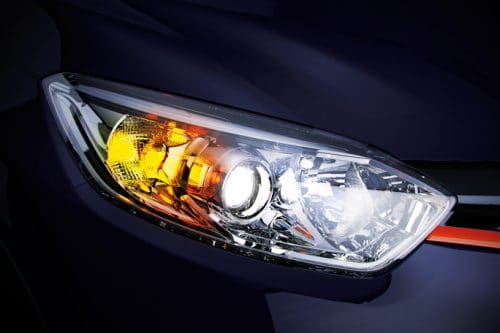
According to a recent research, the Insurance Institute for Highway Safety’s headlight ratings plan is lowering hazardous nighttime collisions in the real world. The study discovered that automobiles with good-rated headlights have approximately 20% lower nighttime accident rates per mile than vehicles with poor-rated headlights. Crash rates are 15% and 10% lower in cars with acceptable or mediocre headlights than in vehicles with bad grades.
If you have been injured in a car accident at night, or any other time of day, you deserve help from an experienced personal injury attorney. You can get that help by calling The Law Offices of Larry H. Parker at 800-333-0000 for a free legal consultation.
Nighttime driving is much more dangerous than many people realize
“Driving at night is three times more dangerous than driving during the day,” says IIHS Senior Research Engineer Matthew Brumbelow, who led the research. “This is the first research to show how much improved lighting from headlights may assist.”
Crash reductions at night when using good, average, or mediocre headlights
Drivers and researchers had no meaningful method to assess how effectively different headlights lit up the road before the IIHS began its headlight ratings program in 2016. Various headlights produced different levels of illumination in real-world situations, but the outmoded federal standard essentially labeled them as the same.
After five years, the IIHS has evaluated over 1,000 different lighting systems, allowing Brumbelow to investigate how good, acceptable, marginal, and poor-graded headlights impact collision rates. Brumbelow started by identifying 187 vehicle models from 2015 to 2020 that have either a single IIHS-rated lighting system or several systems that could be determined by the vehicle identification number (VIN).
He next looked at police-reported incidents involving those cars in 11 states with particularly thorough data and found about 44,000 single-vehicle crashes that occurred in the dark. Because high glare isn’t a problem in single-vehicle collisions, he modified the ratings to remove any point deductions for it.
Good-rated headlights were linked with a 19 percent reduction in the nighttime single-vehicle accident rate when compared to poor-rated ones, even after controlling for variations in kilometers driven, driver-related risk factors, and other variables such as different road conditions. Acceptable and mediocre headlights were linked to 15% and 10% decreases, respectively.
Brumbelow also discovered that particular sorts of crashes resulted in higher decreases. Good-rated headlights reduced the rate of collisions in which the driver was injured by 29% and the rates of tow-away crashes and pedestrian crashes by roughly a quarter each when compared to poor-rated headlights.
“These real-world results indicate that higher scores in our headlight tests translate into safer nighttime driving on the road,” adds Brumbelow.
These decreases demonstrate that federal headlight restrictions, which have remained mostly unchanged since 1968, are insufficient. At various angles, the federal standard sets minimum and maximum brightness levels for headlights. However, it just looks at the headlamp itself, not how effectively it’s directed once it’s placed on a vehicle or how newer technologies like curve-adaptive headlights could modify that orientation while the vehicle is driving.
The IIHS, on the other hand, conducts its evaluations using vehicles that have been driven on a test track. The ratings are based on how well the low and high beams illuminate the route to 5 lux when going at 40-50 mph on bends and straightaways. Glare that might briefly dazzle oncoming cars is also lost points. (For comparison, the ambient light in a typical office building corridor is around 80 lux toward the end of twilight on a clear day.)
The level of performance varies considerably. The IIHS has tested headlights with low-beam illumination ranging from 125 feet to 460 feet. That’s a difference of two seconds for a motorist traveling 50 mph.


